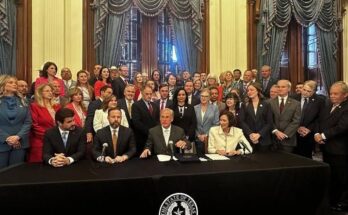A secret alliance may have signed his death warrant. While Charlie Kirk was a conservative icon, his final months were defined by a secret war with his own board over one person: Candace Owens.

The single bullet that tore through the evening air at Utah Valley University on September 10th, 2025, did more than just end the life of Charlie Kirk. It ripped the cover off a volatile world of secret alliances, bitter betrayals, and immense political pressure that defined the final days of the conservative firebrand.
Kirk, the 31-year-old founder of Turning Point USA, was a titan to his followers and a lightning rod to his critics. His assassination, live in front of a stunned audience, sent an immediate shockwave across the nation. But as the smoke cleared, the story that emerged was even more shocking than the act itself.
This was not, as local police initially claimed, the tragic work of a lone, disturbed student. Within hours, authorities had 22-year-old Tyler Robinson in custody, painting the picture of a simple, open-and-shut case. But that narrative crumbled almost immediately.
The story of the “lone gunman” lasted less than 48 hours before the FBI took control of the case, and their assessment was chilling. They publicly reclassified the murder not as a random shooting, but as a “politically motivated hit job.” This wasn’t just a semantic change; it was a declaration that the entire initial investigation was wrong. The focus shifted from the rooftop to the inner circle.
The local police officers who first handled the scene? They are now the subjects of an internal investigation, facing questions of gross negligence or, more sinisterly, active complicity. Did they deliberately bungle the evidence to protect a killer?
As federal agents began peeling back the layers, the first cracks appeared in the foundation of Kirk’s own organization. The people closest to him, the ones who should have been the most reliable witnesses, were proving to be the most evasive.
Charlie’s wife, Erica Kirk, was brought in for questioning three times. Each time, her account of the days leading up to September 10th reportedly shifted. Agents noted glaring inconsistencies in her timeline, moments of emotional withdrawal where she refused to answer, and vague accusations against the security team that she couldn’t substantiate. The FBI’s conclusion was stark: she was holding something back.
She wasn’t alone. One by one, Kirk’s close staff and the event coordinators were interviewed. Their accounts failed to align. The TPUSA event coordinator, questioned for a grueling two hours in a second interview, stumbled and fell silent when pressed on Kirk’s behavior and specific meetings. The head of Kirk’s security detail provided perhaps the most critical clue. He admitted that while Kirk was usually “calm and confident,” he had been visibly “tense” for the last ten days, as if buckling under some unseen pressure. When he tried to ask, Kirk brushed it off.
That unseen pressure, insiders and sources now allege, was a brutal, internal war that was tearing TPUSA apart. And at the center of it was a name that had once been synonymous with the organization: Candace Owens.
Though Owens and TPUSA had parted ways publicly, she and Kirk had secretly maintained contact. This wasn’t just a friendly correspondence; it was the root of a full-blown crisis. In August, just weeks before his death, Kirk had told his board he was meeting with major donors. It was a lie. He was actually attending a private group chat that included Owens, planning her return.
When the board discovered the deception, all hell broke loose. A close staffer, who knew Kirk’s phone password, reportedly unlocked the device and confirmed the board’s worst fears. They confronted Kirk in what sources describe as a “tense showdown.” The organization’s biggest donors were informed, and they were furious. They saw the reunion as a PR disaster and a threat to their interests.
Kirk was cornered, grilled, and warned to cut off all contact with Owens or face severe consequences. He had an emotional breakdown during the confrontation, but he refused to back down. He stubbornly believed he could bring her back, reuniting the two biggest forces in the young conservative movement.
This conflict defined his final days. On September 8th, just 48 hours before the fatal shot, Kirk had another explosive argument with the board. He left that meeting distraught, alienated from the very organization he had built.
But his isolation was about to become terrifyingly complete.
That same night, at 9:00 p.m., Kirk began a marathon WhatsApp conversation with Candace Owens. For five agonizing hours, until 2:00 a.m. on September 9th, the two argued. The chat logs, now reportedly in the hands of the FBI, paint a devastating portrait of a man at his breaking point.
He pleaded with her to stand by him, to agree to the reunion, to give him the support he needed to fight his own board. “My donors are pressuring me every day, and now you’re pulling away, too,” Kirk allegedly wrote. “I fought all of TPUSA for you. I told them I’d never let you go… If you don’t listen, I’ll be left alone.”
Owens refused. According to sources familiar with the exchange, she told him she was separate now, that her fans wouldn’t accept a reunion, and that she would face backlash if she joined him. She told him to wait. But Kirk, fed up with the pressure from TPUSA and feeling utterly betrayed, was out of time.
He was a man who had just lost a war with his board and, in that five-hour chat, had just lost his last, most important ally.
He arrived at UVU the next day, prepped for his speech, and walked onto the stage. He dragged the event into the evening. And then, the shot rang out.
This is where the murder investigation takes its most dramatic turn. Armed with these chat logs and call records, federal agents reportedly went to Candace Owens’s home to question her.
She was gone.
The rumor, now spreading like wildfire, is that Owens is on the run. Sources allege that her role is “highly suspicious” and that, in a fit of rage after their final, bitter argument, she may have plotted his murder.
This has cast suspicion back onto the TPUSA board. Why do their stories keep changing? Did they hate Kirk’s connection to Owens enough to be involved? Or are they simply covering their tracks, terrified that their final, brutal confrontations with Kirk will be exposed?
In the chaotic aftermath, the truth has become a casualty. Kirk’s death was immediately co-opted for political gain. Protests and PR stunts erupted, with various factions using his name to boost their own profiles and mislead the public. Speeches were made, and accusations were hurled by people with no knowledge of the facts, spinning their own narratives to capture the spotlight.
TPUSA’s attempts to hold memorials were reportedly delayed by political groups pressuring them, turning a moment of mourning into a spectacle. The leader was gone, but his name was still being used for cash and clout.
The investigation has reached a fever pitch. The FBI is connecting every dot, from the compromised local police to the inconsistent testimony of Kirk’s wife, from the furious board members to the 22-year-old alleged shooter, who now looks less like a killer and more like a patsy.
And at the center of it all is a five-hour argument and a vanished woman.
The question is no longer if there was a conspiracy. The question is how high it goes. The FBI believes the truth is close, and when it finally surfaces, it promises to be a revelation that will shake the political world to its very core.



